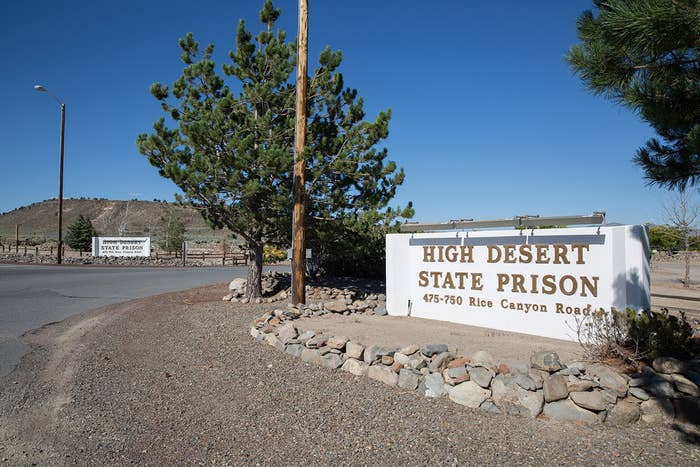
Correctional officers at High Desert State Prison in Susanville, California, exhibit “indifference to inmates” and abide by a code of silence thanks to “an entrenched culture of self-protection and loyalty to HDSP above everything else,” according to a report released this month by the state’s Office of the Inspector General. The investigation’s findings dovetail with a story about the suicide of a prison guard at the facility published in August, which is cited in the report along with stories from other outlets.
The investigation, which cites interviews with staff and inmates and a review of documents, concluded that this culture at the prison has been “exacerbated by the unique geographical isolation, the high stress environment, and a labor organization that opposes oversight to the point of actively discouraging members from coming forward with information that could in any way adversely affect another officer.”
In June, the State Senate Committee on Rules requested the OIG to review practices at High Desert. The committee cited allegations of excessive force against inmates and asked that the OIG examine how the prison internally investigates those allegations. The OIG report is only the latest account depicting a culture of abuse at High Desert. A 2008 report by state researchers found that High Desert officials ignored or rejected most complaints filed by inmates. A 2010 investigation by the Sacramento Bee revealed evidence of racism and cruelty among guards. A 2012 OIG report raised concerns about the prison’s code of silence, allegations of abuse, and claims that some guards “would provoke inmates into physical altercations to necessitate the use of force.”
The latest report was “intended to determine whether there is a culture among the custody staff at HDSP that contradicts the CDCR’s paramount objective of ensuring the safety of both inmates and staff in the prison system,” the report stated.
The report found many ways that the prison did not, in fact, reach this objective. The prison, for instance, exhibited “a culture of racism and lack of acceptance of ethnic differences,” including allegations that guards regularly use racist slurs and disproportionately punish black inmates with solitary confinement, shorter eating times, and the least desirable jobs. Though 79 percent of inmates are black or Latino, 74 percent of rank-and-file guards and nearly 90 percent of supervisors are white.
Guards at the prison also turned to excessive force at a higher rate than at any other maximum security prison in California: 76 percent of “incidents” at High Desert involved excessive force.
At the same time, complaints filed by inmates to the prison’s Appeal’s Office were “being destroyed or discarded,” including being shredded by Appeal's Office staff, the report stated. “If the appeal contained a complaint against staff, the inmate was subjected to retaliation.”
Among the evidence noted in the report was a BuzzFeed News story from earlier this year about correctional officer Scott Jones, who killed himself in 2011 after facing harassment from colleagues for breaking the prison guards’ code of silence, known colloquially as “the green wall.”
Those who reported misconduct committed by a member of the group, the report stated, faced “unfavorable job changes, being ostracized and labeled as a ‘rat,’ shunning in the community, retaliatory investigations, verbal badgering and abuse, the threat of not responding to an inmate assault on staff, and even physical assault by a custody supervisor.” The OIG found “several examples” of COs turning a blind eye to abuses at the prison because of “fear that the consequences of reporting misconduct will outweigh the risk of remaining silent.”
Efforts to reform the prison over the years have failed, the report concluded, in part because of the facility’s geographic isolation and strong resistance from the prison guard union.
While investigating High Desert, the OIG “faced significant opposition from the union.” For instance, the California Correctional Peace Officers Association distributed an “Urgent Alert” memo directing High Desert guards not to speak with OIG investigators. Union officials filed a grievance to the corrections department, sent a letter to the governor, and filed a lawsuit against the state, claiming that the review process violated the rights of COs.
Fixing the the problems at the prison began with giving it a “culturally diverse staff who have experience working in other institutions and do not have lifelong ties to the community,” the report stated. The OIG also recommended the use of body cameras and an internal audit into how the prison handles complaints from staff and inmates.
“The department is now being presented with yet another opportunity to fix the problems at HDSP that have plagued the institution for over a decade,” the report stated. “Otherwise, this review will have been for naught and another review will almost assuredly follow in the very near future.”
